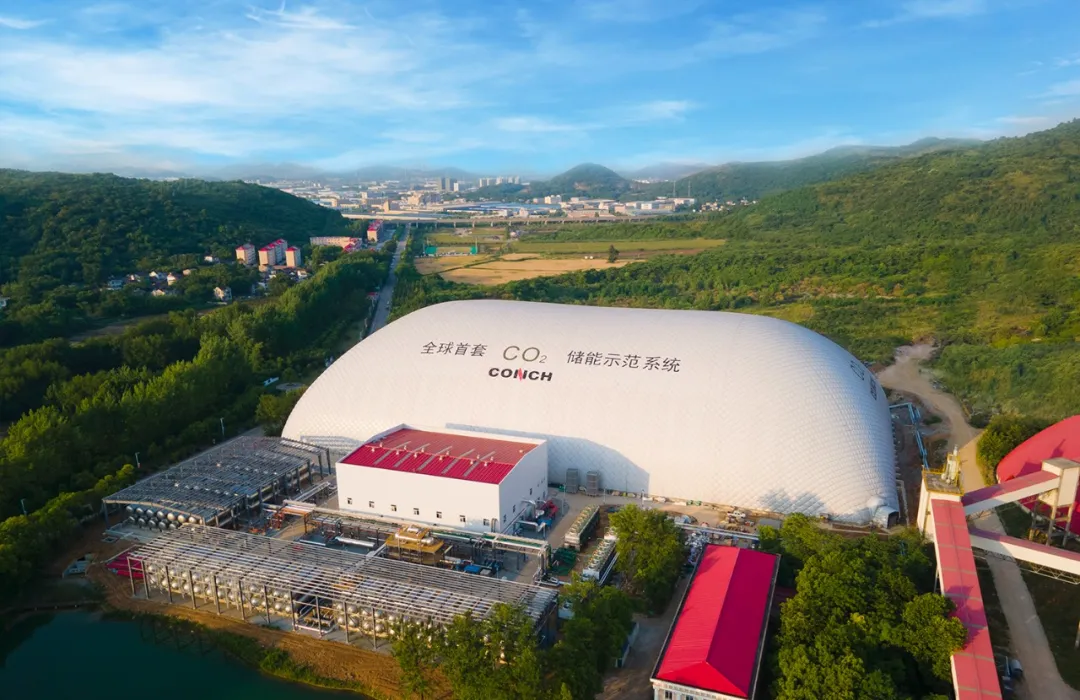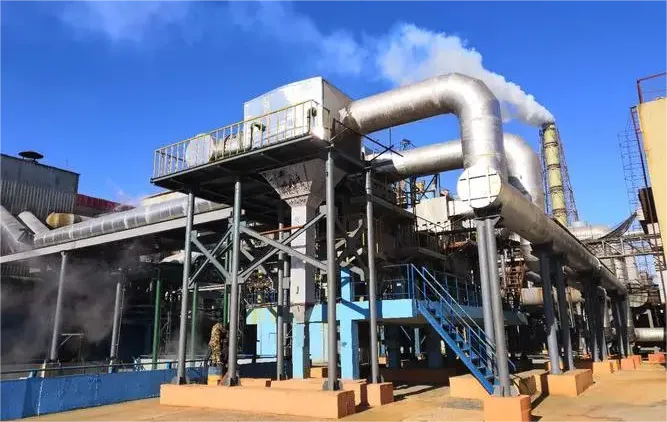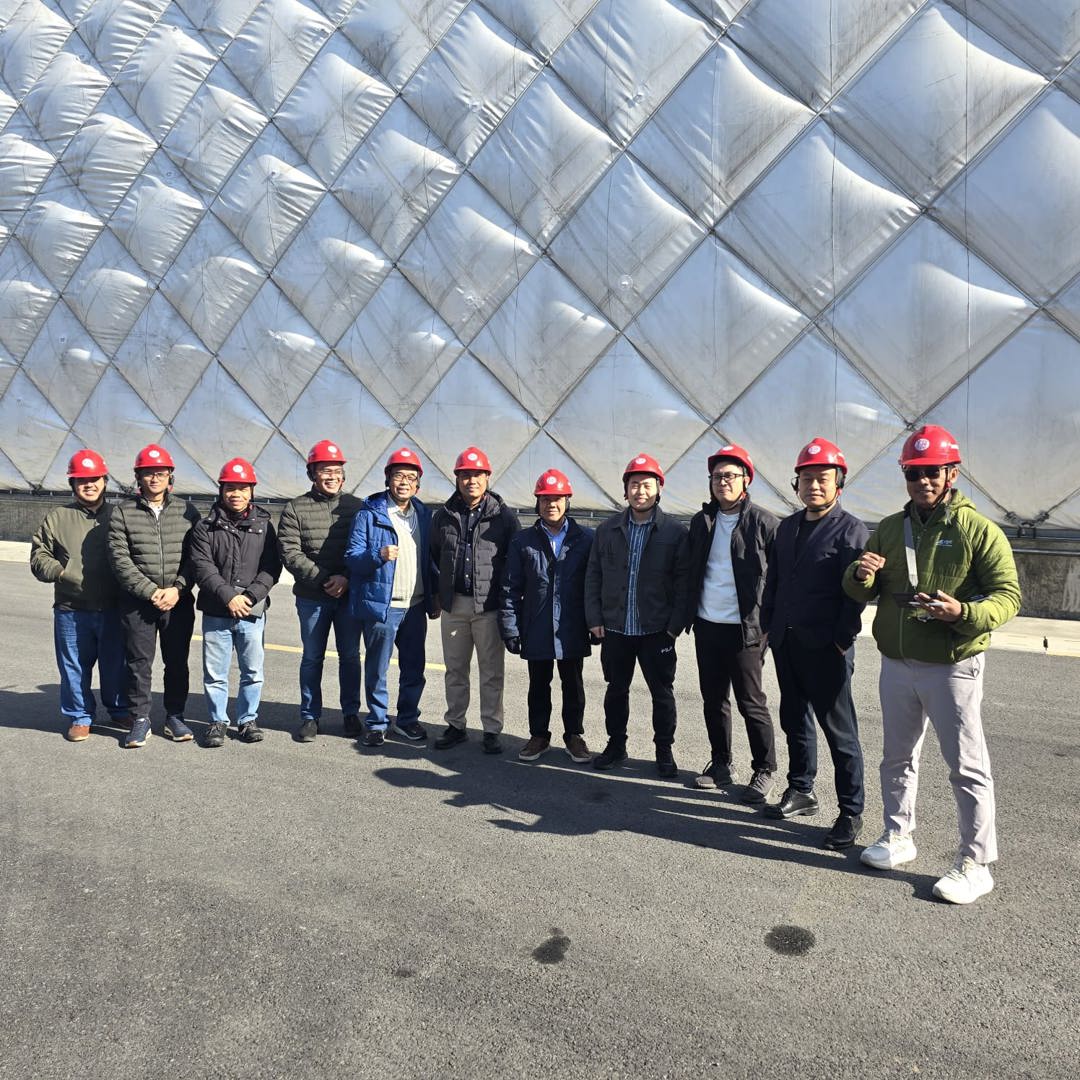Baixuan New Carbon Dioxide Energy Storage is a long-term energy storage technology that utilizes carbon dioxide as a working fluid for gas-liquid conversion and two-phase synergy. Due to the closed system, carbon dioxide is circulated as a working fluid during system operation and will not be emitted or leaked to the outside world, thus naturally possessing carbon sequestration capability.
How specific is its carbon sequestration capacity? Let's take the Wuhu Conch project as an example for analysis:
The Practice of Carbon Sequestration in Wuhu Conch Energy Storage Project
The Wuhu Conch project covers an area of over 40 acres and initially stored more than 2900 tons of carbon dioxide at once during construction. The system has a service life of over 30 years, which means it can store carbon dioxide for at least 30 years.
Comparing the carbon sequestration capacity of forests: According to estimates from relevant institutions, each tree can absorb approximately 10 kilograms of carbon dioxide per year. Through research, it is known that the artificial afforestation density is about 50 trees/acre. Therefore, the amount of carbon dioxide that a 40 acre forest can absorb in 30 years is: 50 trees/acre x 40 acres x 10 kilograms/(tree · year) x 30 years=600000 kilograms, which means that a 40 acre forest can absorb about 600 tons of carbon dioxide in 30 years.
2900 tons/600 tons=4.83, which means that the direct carbon sequestration capacity of a carbon dioxide energy storage system is 4.83 times that of an equivalent area of forest!
Another emission reduction capability of carbon dioxide energy storage - waste heat utilization
Due to the technical characteristics of gas-liquid two-phase carbon dioxide energy storage, the system can utilize low-grade waste heat at 50-100 ℃ in the environment to promote the evaporation of liquid carbon dioxide and increase the system's power generation during the power generation process.
In the Wuhu Hailuo project, the waste heat from the kiln tail gas of the cement production line was utilized to supplement it into the carbon dioxide energy storage system. According to calculations, this part saves 3130 tons of standard coal per year, which is equivalent to reducing carbon emissions by more than 8200 tons per year. According to the above conversion method, the carbon reduction in this part is equivalent to planting 820000 trees and artificial afforestation of 16400 acres.
In summary, carbon dioxide energy storage can not only serve as a power infrastructure to promote the consumption of renewable energy, assist in peak shaving and valley filling of the power grid, and help users reduce electricity costs, but also play an important role in large-scale carbon sequestration and replacing artificial afforestation. With the continuous acceleration of the global energy structure transformation process, carbon dioxide energy storage will become one of the important means for humanity to address the challenges of climate change!
Carbon dioxide energy storage - It can both store energy and seal CO2
 32
32
 Jul. 11, 2024
Jul. 11, 2024

Dec. 23, 2025
Overseas Market Momentum Builds: Exaᕽ Energy Tech Accelerates Global Expansion
Read More
- Accelerating Overseas Expansion! Australia's Global Power Energy and SolarH2E Conduct On-Site Inspection of Exaᕽ Energy’s CO₂ Energy Storage Project
- Huadian 100MW/1000MWh CCES Power Plant Carbon Dioxide Tanker Completed
- Exaᕽ Energy Tech Demonstrates the Strength of a Leader in the Energy Storage Industry Through Its Global Patent Portfolio








